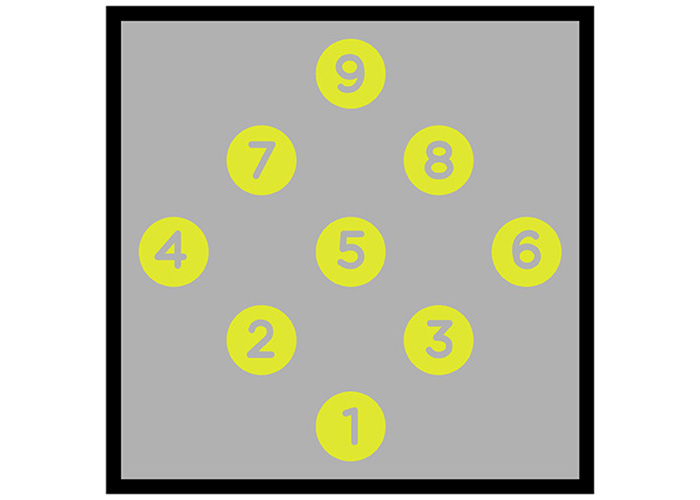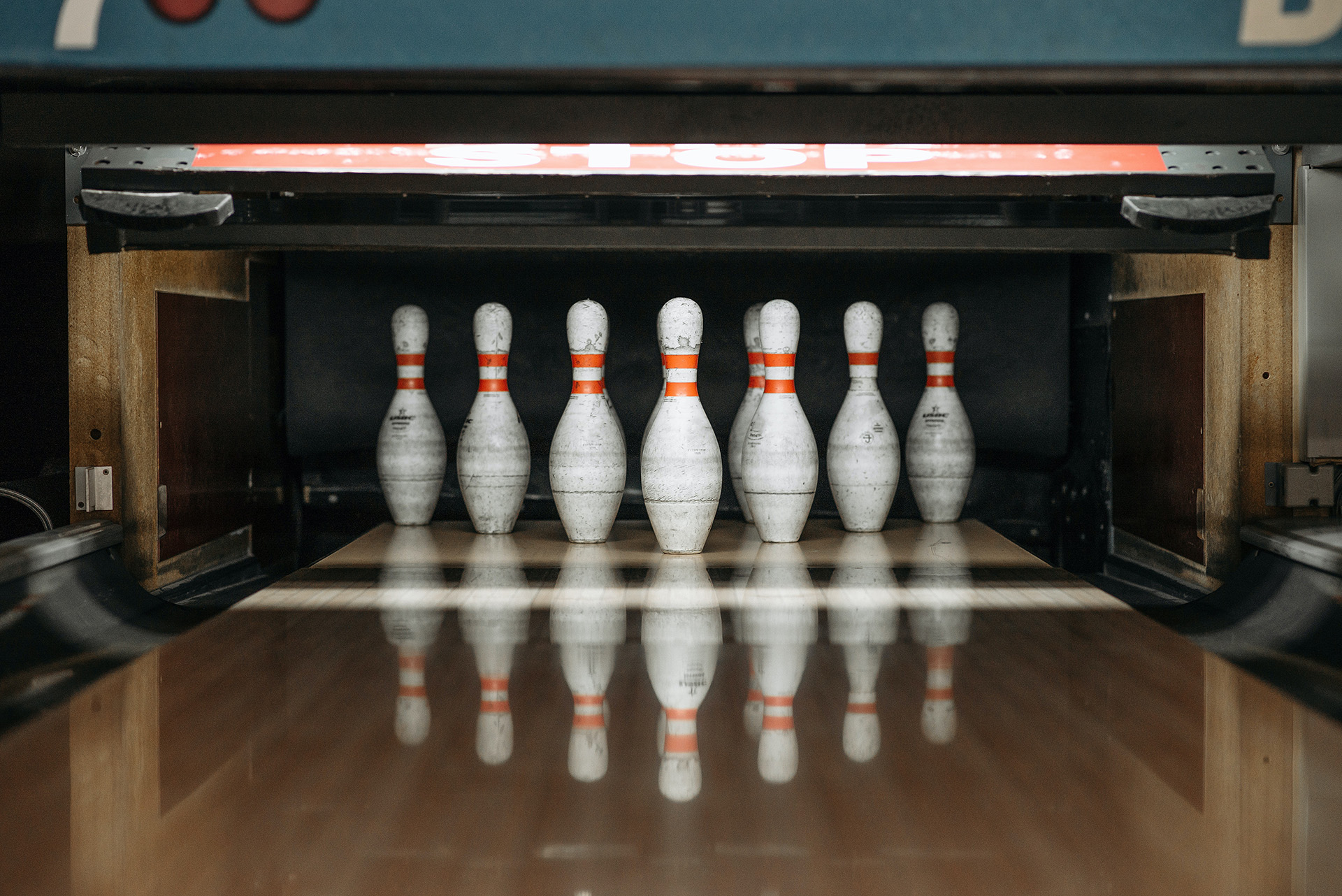Cone position
The game is played on 9 skittles, which are arranged as a diamond.
Litter rating
Regardless of which game of Ninepin is played, the number of skittles dropped counts. Many bowling alleys are equipped with an electronic image display, whereupon the count is done automatically. If the bowling alley lacks an automated display, the scores are written down by the referee on sheets provided. In recreational bowling, the throw score can be taken by any other player. By the way: Balls that fall to the player and roll over the drop line are counted as a valid throw.
Especially with beginners, some throws occur where it is questionable whether the fallen pins can be included in the score. We will be happy to explain to you the common misses in bowling:
- If, immediately after the ball has been thrown, one or more cones fall down prematurely before the ball has reached them, the throw is invalid and must be repeated. This also applies if the setting machine pulls up the cones before the ball arrives.
- Balls that enter the bowling field before the automatic is ready are played too early. Again, the result is not scored and a re-roll is required. If the ball enters too early a second time, the throw is scored as a "zero throw". Obvious errors in the electronics or automatic system are not affected by this rule.
Missed bowls
The miss in Nine-pin-bowling is the failure to hit the skittles, the tying up or the running of the ball into the miss chute. Such misses are written down as "X". The automatic recorder evaluates misses as "0". So-called zero throws are throws that continue to be executed improperly after a warning has been given. In league play, these violations lead to a warning and, if repeated, to a zero throw score:
- Placing the ball next to or behind the top plank
- Crossing the boundary line at the end of the top plank
- Dropping the ball too early
- Touching the floor with hands or knees
- Supporting against the wall or ball return after taking the starting position







.png)




